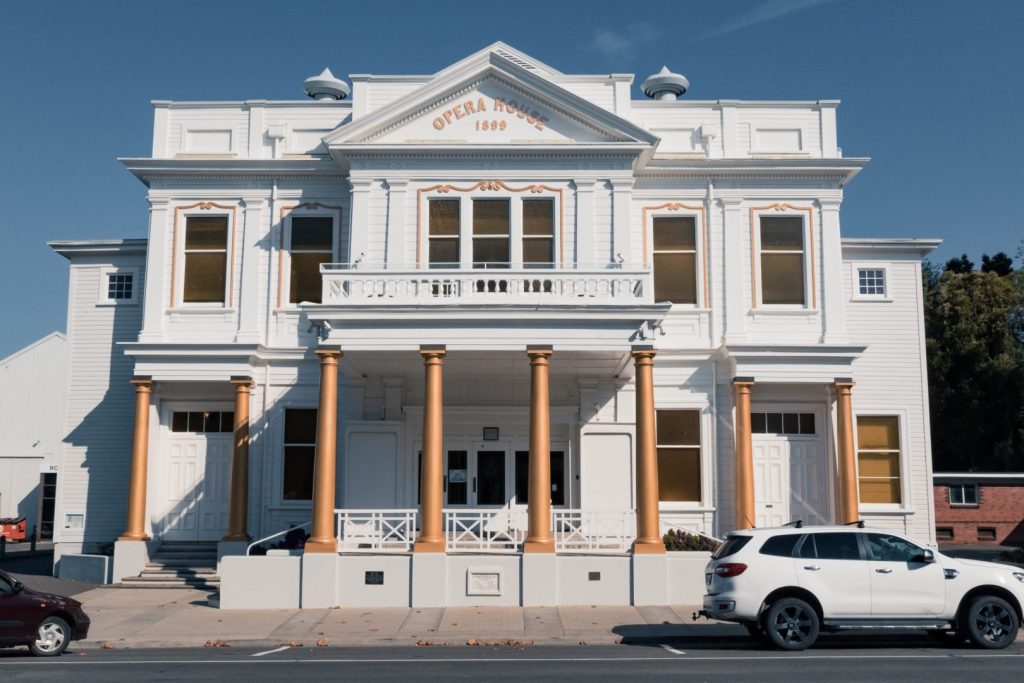Arts & Culture
Whanganui has a well-deserved reputation as a great home for artists, but living in a creative centre is good for the whole community. We have endless opportunities to enjoy visual arts, performances and to take lessons from the experts.
Explore Museums and Galleries
The historic Sarjeant Gallery is home to one of the best collections of fine art in New Zealand, the Whanganui Regional Museum has an extensive collection of Lindauer portraits and taonga Māori, and Quartz Museum of Studio Ceramics includes a comprehensive collection of ceramics.

Music
Whanganui’s music scene is known for its quality and diversity. On any given night, you’re as likely to catch an opera as an open-mic night. The Royal Whanganui Opera House and the Musician’s Club are both nationally renowned venues, while bars like Porridge Watson and Frank host a wide range of gigs.
Theatre
You’ll find plenty of theatre running at The Royal Opera House as well as our two local theatres, the Wanganui Repertory Theatre and Amdram, the oldest Amateur Dramatic Musical Theatre in New Zealand.

Literature
Whanganui has a rich literary tradition, having been home to literary luminaries like James K Baxter, Janet Frame, Ian Cross and Robin Hyde. We love the written word and celebrate bi-annually at the Whanganui Literary Festival. Paige’s Book Gallery is a treasure for readers and writers – ask them about their Book Club programme.
Learn a new skill
Try your hand at glassblowing at the New Zealand Glassworks or shop for local art at our many downtown galleries.
Find out more about glassblowing, glass casting, glass slumping, pottery and community arts.
Quartz Museum of Studio Ceramics
Established by renowned potter Rick Rudd, the Museum displays his collection of over 700 works by New Zealand and international potters.
The Rick Rudd Foundation, a charitable trust, established the Quartz, Museum of Ceramics. The museum houses more than 400 works in its collection. Ceramic works are also borrowed from private collections for special exhibitions at the museum and each year an installation is commissioned. This unique addition to Whanganui’s creative industries’ offerings is a must-see for art lovers.
Also on show are more than 500 works from the Simon Manchester collection.
The Rick Rudd Foundation was set up in 2013 as a Charitable trust and in 2014 Rudd bought Munford House and gave it and his collection of studio ceramics to the foundation.
Rick Rudd began working with clay at art collage in England in 1968, moved to New Zealand in 1973 and has been a full-time studio potter since 1975. He has kept illustrative works from his practice throughout his career and now has over 250 pieces. Many of them are on show.
Creative Communities
Our creative industries are vibrant and productive and there’s something for every art lover to indulge in.
Whanganui has more than 400 resident artists creating photography, mosaics, jewellery, paintings, pastel, pottery, re-invented art, sculptures, fashion, textiles and glass. Galleries are open year-round and have everything to satisfy the most avid collector or the casual browser. Art has been created locally for at least 800 years and this heritage of design inspires and informs the artists creating in the region today.
















































